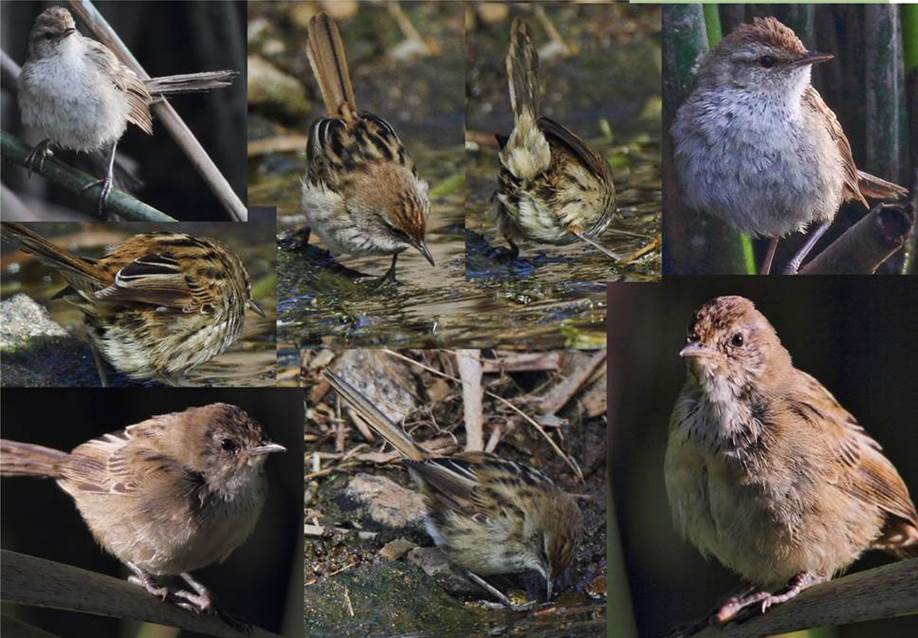Julie - You might have heard more about the LGB than you want to know, but here are some examples of it in the field. It is not that well known visually, partly because it is hard to see and partly because the plumage varies according to state of wear, and the available light - it might appear bright with reddish tones or dullish grey-brown. This can be accentuated by digital photography, because a bit of manipulation either voluntary or involuntary (by camera properties or settings) can make a big difference to those reddish qualities. The best guides (apart from call) are those sparrow like markings on the back (but watch cisticolas), the short slightly down-curved bill, and if you are close enough the dark flecks on the breast. It has a weak fluttering flight (but so do cisticolas sometimes). In size it is intermediate between the reed warbler and the cisticola. Look for it in small muddy patches near the base of the typha.


